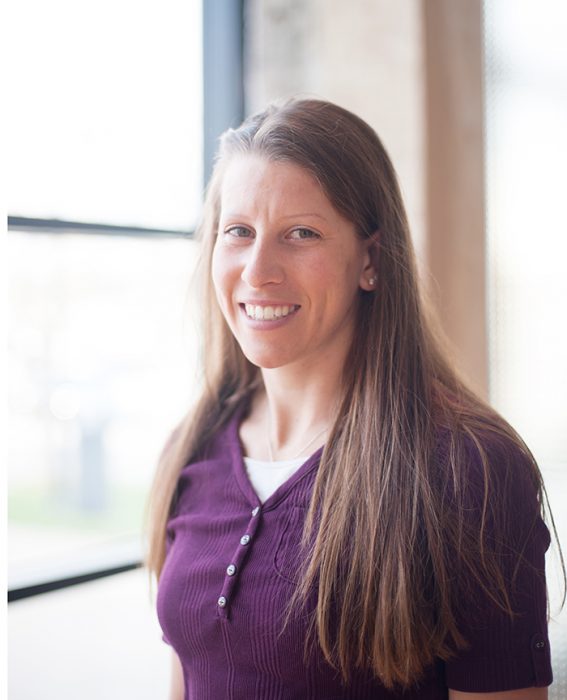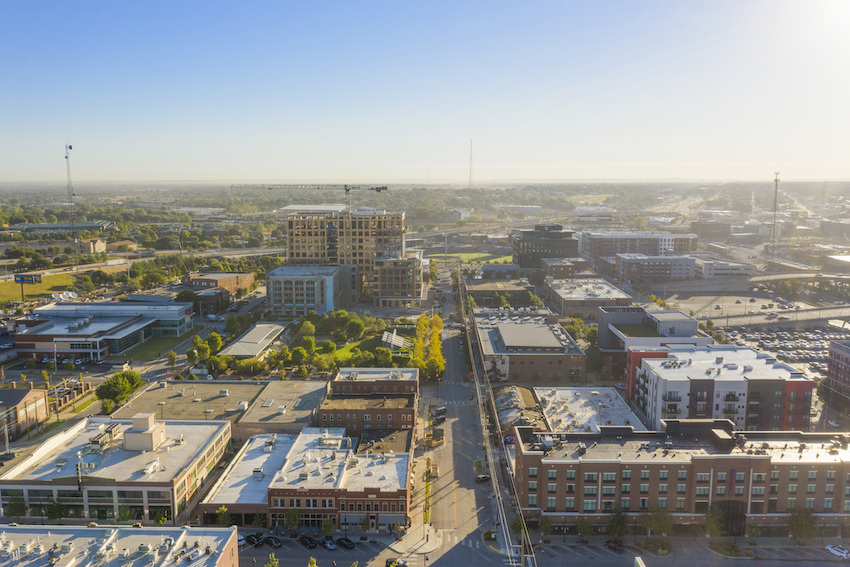Is progress still progress if there's an ugly side to it?
As a recently replanted Tulsa transplant (one who moved to Tulsa almost ten years ago, left four years ago, and has recently come back), I’ve noticed a few things that have got me pondering this lately.
The morning of my second day back in the Tulsa office, I cruised off the highway towards the new garage that I had been informed was now accommodating Wallace's overflow parking. Off of Elgin just after the tracks? "No problem," I thought.
As I made my way through the East side of downtown on that dark morning, I suddenly began second guessing myself. I leaned forward, twisting my head to get a better glimpse of the unfamiliar silhouettes of multi-story buildings and tower cranes standing out against the cobalt sky. A mild panic set in.
"Wait, am I sure this is Elgin? Why can't I see the ballpark? What are these buildings? Where am I??"
Needless to say, I drove right past the garage.
If you know me and my navigation skills, that's probably not a huge shock. But personally, I was pretty surprised. Coming back to a town I thought I knew - one that always still felt like home during those four years away - now was a stranger?
Previously empty lots across from the ballpark now house the six-story Vast Bank headquarters and a luxury apartment complex. The Arts District is bookended by what are sure to be cultural icons for Tulsa - Greenwood Rising on the East and OKPOP on the West. New condos, parking garages, and a hotel have sprouted here and there. And the new towering focal point - the 11-story mixed-use building - can be seen from all corners of the Arts District and beyond.
But unrecognizable is good. It means progress, right?
Yet I quickly realized there was another aspect that was contributing to my feelings of unfamiliarity. Something beyond the buildings.
On a sunny day during my first week back, I set out on a lunchtime walk, letting my feet find a path I had walked so often just a few years back. Less than a block in, a man approached me asking for change. Then, as I rounded a corner towards my favorite quiet route, I paused at the sight of two tents under the overpass. I decided to instead wander through Reconciliation Park, but found it locked. Running out of options, I crossed the street to the new Pathway to Hope. Peaceful and pristine, while a bit remote. I found myself glancing behind me every so often.
This wasn't the Tulsa I remembered. In more ways than one.
The North end of downtown Tulsa has changed - and more than just the name. There’s more culture and luxury, but also more visible hardship. I'm not saying homelessness in this area didn't exist before or that recent construction is to blame or that we need to scrub it out because it's detracting from the upscale improvements. I'm simply making an observation that forward momentum in the Tulsa Arts District over the past four years has resulted in more than just high- end development. It also seems to have brought a festering issue to the surface. And with it, a stark reminder that progress in one area might not mean progress everywhere.
So I'll ask again: what defines progress? Does it come with an asterisk if not everyone benefits? Or does it get canceled out completely?
At the end of the day, I think this reimagined section of town is certainly progress. Tom Wallace started a transformation in what was previously a desolate industrial neighborhood when he renovated an abandoned warehouse for Wallace’s headquarters. ONEOK Field, Guthrie Green, and shops and restaurants followed. Those developments plus this boom of new growth make the North end of downtown Tulsa a thriving, invigorating place to be.
But everything I’ve seen tells me that progress can’t just be about forging ahead. It should be about pushing forward, but also looking around as you go. Seeing what kind of unintended consequences you're creating or what else is happening outside of your bubble of success and then circling back when necessary. Thinking critically about the root cause of what you're seeing and then branching out to create opportunities for progress on a variety of fronts to help ensure everyone is along for the ride
At Wallace, our goal has always been to "make lives better." We've been fortunate to have a part in improving Tulsa through projects like OKPOP, Mathews Warehouse Renovation, Guthrie Green, the 222 North Detroit building, and Greenwood Rising. But we’ve also been fortunate to provide services - both as consultants and community volunteers - for facilities that help those who might be in the shadows of these new developments.
As we are in the season of giving, it is great time to look around and see who's being left out of high-profile progress and then contemplate what you can do to create more opportunities for those on the outskirts. Hopefully, this holiday season can be the start of a year-round outlook, because while progress on one front is great, progress on all fronts is better.
tulsa day center for the homeless - tulsa
| client • todd architecture group
| contractor • miller tippens construction company
| services provided • civil and structural engineering
Where hope and the homeless meet, the Tulsa Day Center serves an average of 140,000 people per year. Wallace provided structural and civil engineering services for their 16,000 square foot addition and complete renovation of their existing facility. The project also included the revision of their existing parking lot. The expansion of the facility enables the organization to continue to provide health clinic services and personalized case management to assist with rehousing and other basic needs. The reconfiguration of their operations helps them to deliver their services more efficiently to those in need.
iron gate on archer - tulsa
| client • gh2 architects
| contractor • flintco
| services provided • civil and structural engineering
Serving over 210,000 meals per year, Iron Gate is Tulsa’s largest stand-alone soup kitchen and grocery pantry. Iron Gate was born in the courtyard of Trinity Episcopal Church in Downtown Tulsa forty years ago. It all started when three Trinity parishioners stepped out of a bible study class to fix a homeless man a sandwich. Wallace provided civil and structural engineering services for the new 17,000 square foot community center. The center features a new covered patio with almost 2,000 square feet of space, seating for 60 and an outdoor hand washing station. The patio was designed to help Iron Gate guests get out of the elements while they wait for the doors to open and eliminate the bread-line effect. The new facility also dramatically increases Iron Gate’s storage capacity adding 1,500 square feet of bulk storage and cooler space as well as a new 1,200-square-foot dedicated pantry space.



There are no comments.